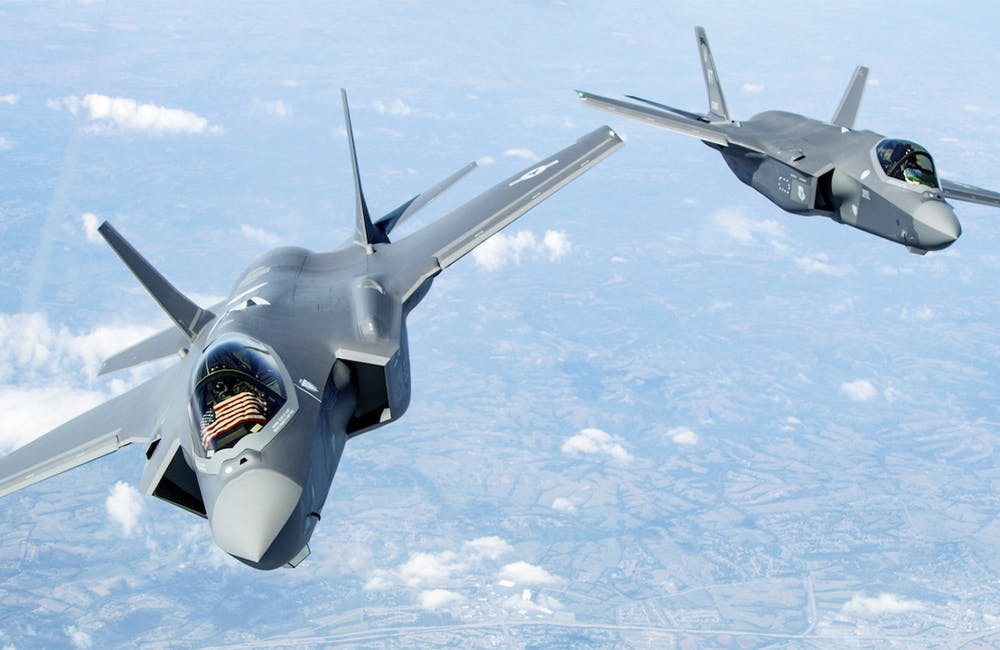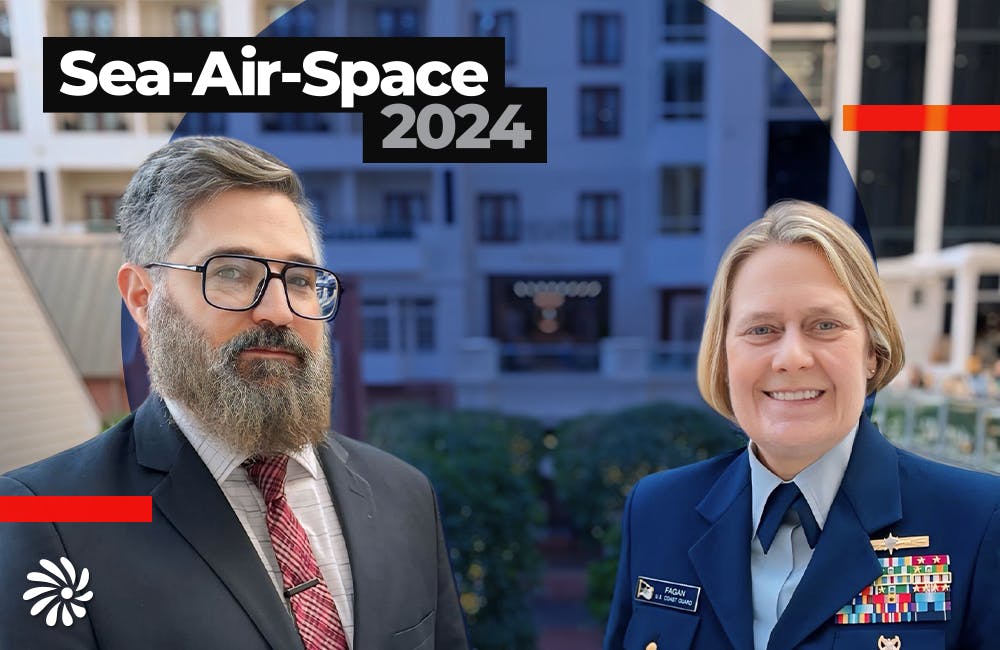Fed Health IT Officials Highlight 2022 Priorities
Smarter modernization, data, automation, as well as customer and digital services will see the spotlight in 2022.

With 2021 coming to an end, federal health agencies are looking ahead to the coming year with new goals and efforts in place to improve services and care. From customer-facing solutions to back-end infrastructure, IT will play a central role in the future of federal health.
Health IT leaders from the departments of Health and Human Services and Veterans Affairs, as well as the Defense Health Agency, reflected on their agencies’ progress this past year and how they want to move forward in 2022 with continuing and new IT initiatives during the FedHealthIT 100 Awards event this month.
Agencies are eyeing a variety of goals for the coming year, including establishing sustainable and simpler IT modernization, leveraging data and automation, and bolstering customer support and digital transformation.
Sustainable, Simple IT Modernization
Federal agencies often discuss the power of modernization, but many leaders see more value in continuous and sustainable modernization, whether through savvy strategizing or Agile adoption.
The Food and Drug Administration’s tech chief said the agency needs at least 30% of its annual budget to fund growth and transformation to meet business needs. Today, only less than 10% of its budget is available for that.
Without running up budget costs by leveling out or decreasing operating and management costs, CIO Vid Desai said that he wants to reach that 30% goal to growth. To strike this balance, FDA is pursuing cloud modernization that isn’t just a “lift and shift.”
“The problem with lifting and shifting approaches is that you carry all the issues you had in the on-prem environment to the cloud and miss out on the benefits of moving to the cloud, so during modernization we want to make sure that the end-to-end business process is first optimized,” Desai said.
FDA has an enterprise transformation team that reports to the agency’s executive team and commissioner to optimize the business process from start to finish. Desai said this early planning maps out how modernization can meet agency needs without spending funds on modernization.
The Centers for Medicare and Medicaid Services is also pursuing IT modernization that reduces technological complexities and burden. Like Desai, CMS CIO Rajiv Uppal is focused on shifting processes, not just technology.
While Uppal emphasized that the cloud is the future of IT modernization at CMS, human-centered design, DevSecOps and shortening the authorization-to-operate process are steps that will ease the process.
“It’s not just about reign of building new technologies and new systems, but doing it in a way that we’re also improving the way the process is,” Uppal said. “Using human-centered design, for example, that’s been one of our major focus areas also. … When you’re in the federal space, you always hear about [how] we build systems, but it takes so long for us to get the ATO, so that’s been another area of focus for us at CMS. How do we reduce that burden?”
Uppal added that CMS is reducing that burden with a DevSecOps platform-as-a-service solution. With this, CMS already has the ATO for the underlying infrastructure to develop its own solutions rather than waiting for the authority to introduce new pieces to the CMS environment. On top of that, working off the PaaS solution allows CMS to make their environment simpler.
“Today, what happens is, when people build systems, every system has their own set of technologies and databases and all of those things that don’t really talk to each other,” Uppal said. “But if you’re using a common platform, we have a much better chance of reducing technology complexities. The technology stack is very similar, and there’s much greater chance of interoperability.”
Data and Automation
While establishing a sustainable, robust modern IT infrastructure is important, health agencies also are strategizing around data and data-driven emerging technologies like artificial intelligence.
Building off the emphasis on interoperability across CMS’s systems, Uppal said he is looking to create an “enterprise data mesh” in which different organizations and people across CMS can access data, regardless of where it is.
“We are working on making that happen — a data platform that enables the data to be available, having clear authority of who owns the data and what domains are being owned by which office or centers, having appropriate governance of data — so again, with the idea being that if we take care of these things, data will be more easily available and that reduces the barriers for interoperability,” Uppal said.
CMS COO Karen Jackson added that her agency is also looking to leverage data to better fuel preventative medicine and improve health outcomes for CMS beneficiaries.
“We are focused very deeply on looking at our data, looking at our capabilities to think about ways to prevent disease before it happens in those facilities where CMS has insight and provides technical assistance — be that a nursing facility, hospital, individual care provider — really opening up access to that data to improve health care outcomes generally,” Jackson said.
The Department of Veterans Affairs is also pushing forward on improvements to data use for the entire department, looking to increase interoperability and accessibility.
“We’re [trying] to see where we’re going with our current data,” said VA Principal Executive Director for the Office of Acquisition, Logistics and Construction Michael Parrish. “We have a lot of silos, a lot of server-based solutions, and we’re trying to work through those requirements to understand how we’re going to be able to establish a seamless and clean data strategy and data system across the enterprise.”
Like CMS, these data-driven efforts at VA aim to reduce burden across the agency, especially at the end-user level. VA Healthcare Innovation and Learning Chief Officer Ryan Vega explained that data, and tools that data enables, can help streamline health care and administration across VA.
“What we need to do more of is utilize these tools to make it easier to practice medicine or to be an administrator of medicine,” Vega said. “We’ve got to reduce the cognitive burden and the administrative burden on folks — whether it’s things like scheduling or as simple as writing a note in the [electronic medical record]. … We can alleviate a lot of that burden. But I think data transformation is about taking what’s available for us, in front of us, and providing opportunities to make it easier and more enjoyable.”
Vega also highlighted the importance of better collecting and applying data around genetics and social determinants of health can enhance medical decision-making and inform predictive health practices across VA.
Digital Transformation and Customer Service
As agencies adopt modern IT environments and embrace new avenues of providing health care and medical solutions, digital services and experiences will continue to rise as areas of growth.
Federal health agencies view digital technologies and transformation as a tool for improving customer service and accessibility.
“We’re going to have to understand that the role of digital should always be around two things,” Vega said about digitalization at VA. “Increasing accessibility — but we need to embrace it to tackle certain inequities in care. There’s an opportunity for us to really utilize the ability to connect patients who work early or have trouble accessing or connecting to the health system.”
Then Acting VA CIO Neil Evans explained that telehealth has been a major boon for veterans during the pandemic. VA has conducted 14.7 million telehealth visits in November alone. Work like this is helping VA push forward with finding new ways to use digital services to bring the health care experience closer to the patient.
“How do we deliver care where veterans are?” Evans said. “Emerging many ways for us in the health care space within VA has [also] been thinking about how to virtualize care, even for providers and health care staff when they’re not in person. That is, we now have the scenario where we have a provider working from home, taking care of a patient in their home. It’s a very different technological landscape.”
Enhancements to digital solutions and service delivery also include expanding emerging technologies. Vega said he envisions VA further adopting digital solutions for upstream preventative care, such as remote temperature monitoring for diabetic ulcer prevention. He is also looking to take digital to the next level with immersive technologies like augmented and virtual reality.
“Imagine a surgeon in the operating room using [augmented reality], advanced computer spatial technology, for surgical navigation, seeing below the surface before they ever make a cut,” Vega said. “We’re seeing a lot of virtual reality for physical therapy, where the veteran can be in the comfort of their home and actually go through interactive exercises with a clinician in a pre-recorded environment. And this is allowing them to stay in the comfort of their home but in some ways helping to make these things more accessible.”
While emerging digital solutions are on the horizon, VA and the Defense Department are moving forward with electronic health record adoption for more seamless health record management and care delivery.
Defense for Health Affairs Acting Assistant Secretary Dr. Terry Adirim, who will move to VA’s EHR Modernization Office as the new program executive director, added that the agencies will also look toward data system optimization amid the ongoing EHR effort within VA and DOD.
Within DOD, the Defense Health Agency has also now assumed responsibility for all military treatment facilities in the U.S. DHA is currently and will continue to manage the administration of medical treatment facilities (MTFs) in both Europe and the Indo-Pacific next year.
DHA Assistant Director for Management and Component Acquisition Executive Barclay Butler said that the MTF transition creates consolidation of facilities and IT capabilities — such as the new EHR, MHS Genesis — and will drive standardized and stronger medical services for military beneficiaries.
“We have that single active director that enables our clinicians to sign on to their clinical desktop anywhere in the world,” Butler said. “It does provide 24/7 cyber protection from our DHA cybersecurity operations center, that also provides standardized on-promise design of all of our MTFs. That means a standard network management solution, standard desktop systems, standard applications, standard endpoint production.”
Amid all of the efforts that DHA, VA and HHS are pursuing in 2022, all leaders emphasized a desire to collaborate with industry partners to realize their goals. In particular, they highlighted the importance of fostering dialogue around problem-solving and growing. They also emphasized that they want partners to work alongside their agencies rather than having partners offer packaged solutions.
This is a carousel with manually rotating slides. Use Next and Previous buttons to navigate or jump to a slide with the slide dots
-

Strategies for Effective Data Modernization
Data is the lifeblood of critical decisions and streamlines operations across the government, but many agencies struggle with inconsistent standards.
33m watch -

CDC Updates Public Health Data Strategy
Accelerating data sharing through capabilities like electronic case reporting make up a large portion of the new two-year plan.
3m read -

Joint Navy-Air Force Simulator Expanding Digital Fighter Jet Training
A joint facility with the services wants to replicate its F-35 digital simulator technology across the Defense Department.
5m read -

Sea-Air-Space: Coast Guard Prioritizes Agility in the Face of Technological Change
Adm. Linda Fagan says the modern Coast Guard is to adjusting to the speed of technology.
10m watch








